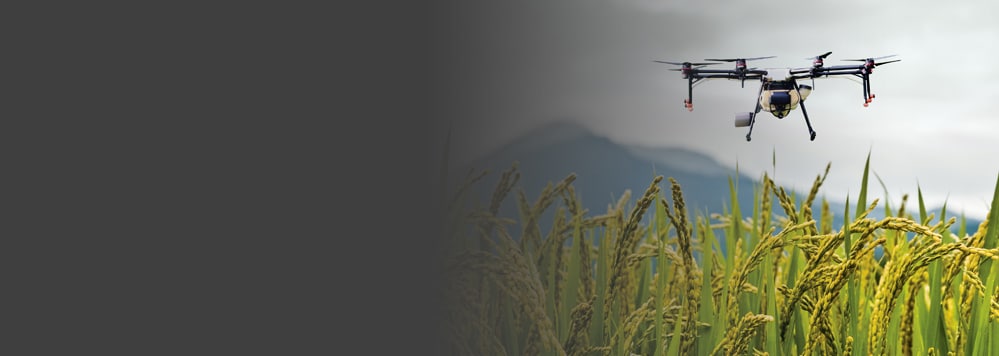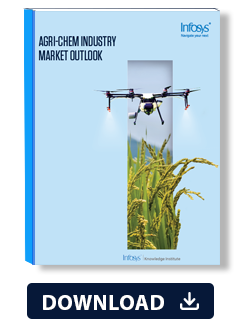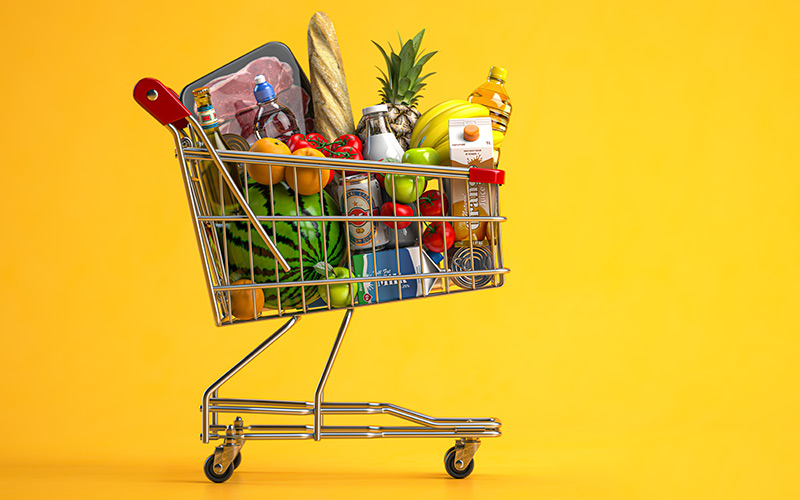Insights
- Global demand for agricultural commodities is projected to grow at 1.2% per year to serve a population of 8.5 billion by 2030. Crop yield enhancement will provide 87% of the productivity improvement required to achieve this target.
- Agricultural chemicals and the associated businesses and services (agri-chem) will play a key role in improving crop yields and ensuring food security.
- Mobility backed by big data, analytics, precision agriculture, and satellite-based global positioning systems has the potential to increase yield, farmer income, reduce food loss and water usage.
- Precision agriculture continues to evolve to address the farming challenges, aided by leaps in computational advances and emerging phygital technologies.
- Other agri-chem industry growth areas include sustainable farming, new product introduction, strategic partnerships, digital platforms, supply chain resilience, and outcome-based business models.
Executive summary
Global demand for agricultural commodities is projected to grow at 1.2% per year through 2030 to serve a population of 8.5 billion by then. According to the UN Food and Agriculture Organization, crop yield enhancement will provide 87% of the productivity improvement required to achieve this target. Agricultural chemicals and the associated businesses and services (together referred to as agri-chem in this report) will play a key role in improving crop yields and ensuring food security to meet this global demand.
That modest growth figure above belies that some sectors will advance more rapidly. The pesticide and other agricultural chemicals market is forecast to grow from $102.9 billion in 2023 to $169.8 billion by 2028, over 10% annual growth, with herbicides having the largest share by function. However, the farming industry faces risks from weather conditions, supply chain disruptions, geopolitical tensions, and policies promoting sustainable growth. Digital technologies must mitigate these risks through timely information and proactive intervention.
Mobility backed by big data, analytics, precision agriculture, and satellite-based global positioning systems has the potential to increase yield and farmer income by 3% to 6%, reduce food loss by 2% to 5%, and decrease water usage by 1% to 3%, according to the World Economic Forum. Artificial intelligence (AI) and machine learning will be applied to improve decision making for efficient consumption of resources such as water.
Agriculture contributed to 10% of the total greenhouse gas (GHG) emissions in the US in 2022. The food and agriculture industry contributed to around a third of the global total GHG emissions in 2023. Agricultural chemical manufacturers cannot afford to miss their focus on sustainability while catering to a growing market for food.
Overall state of the industry
The rising cost of raw materials represents a major challenge for the agri-chem industry. Pests reduce global crop production by a whopping 20-40%, compounded by increasing insect species resistance to pesticides. While farmers may increase pesticide usage, agri-chem manufacturers are aggressively conducting research to develop new formulations.
Precision agriculture continues to evolve to address these challenges, aided by leaps in computational advances and emerging phygital technologies that measure and enhance key parameters.
This leading approach promises to consolidate the digital technology trends mentioned above for continued and responsible industry growth. Other industry growth areas include sustainable farming practices, strategic partnerships and mergers, digital platforms, supply chain resilience, and outcome-based business models (Figure 1).
Figure 1. Top growth areas for the agri-chem industry
Source: Infosys
Research and development (R&D) spending in the agri-chem sector represents 7 to 10% of revenue. Discovery and development of new active ingredients for crop protection in the US and Europe increased from $286 million in 2014 to $301 million as per a recent study. There is low market concentration in the agri-chem sector, averaging 23%. Among the top eight companies in terms of market capitalization (Figure 2), the top five firms alone accounted for 54% of the total agri-chem revenue of $396 billion in 2024. Syngenta continues progress toward its $2 billion investment target in breakthrough sustainable and regenerative innovation by 2025.
Figure 2. 2024 market capitalization of top agricultural input companies
Source: www.companiesmarketcap.com
Short-term outlook
Precision agriculture
The agri-chem industry leverages generative AI alongside the internet of things (IoT) and big data to transform operations, improve decision-making, and drive innovation. Generative AI is increasingly used to design novel agri-chem and optimize formulations. AI models can generate chemical structures with desired properties more quickly than traditional methods. This accelerates the development of effective pesticides and fertilizers tailored to specific crops and environmental conditions.
IoT devices play a crucial role by providing real-time data from fields through sensors and connected machinery. These sensors collect data on soil moisture, weather conditions, and crop health, which is then integrated into big data platforms. Big data analytics processes this vast amount of information to uncover patterns and insights that guide AI-driven recommendations. For example, IoT sensors can provide data on pest infestations, and AI algorithms can predict outbreaks and suggest targeted pesticide applications to minimize chemical use and maximize crop yield.
SABIC uses sensors in its smart farming technology center to measure key parameters and predict nutrient requirement, pest control, and water management for sustainable agriculture using AI.
The convergence of generative AI, IoT, and big data is revolutionizing the agri-chem industry by accelerating innovation, enhancing precision, and improving sustainability.
Sustainable farming practices
Sustainable farming practices aim to balance productivity with environmental stewardship, and the agri-chem industry increasingly supports these methods through digital technologies. Sustainable practices include integrated pest management (IPM), precision agriculture, and organic farming.
Integrated pest management
IPM combines biological, cultural, and chemical methods to manage pests with minimal environmental impact. Digital technologies enhance IPM by providing real-time data and predictive analytics. For example, Bayer's digital platform Climate FieldView integrates data from IoT sensors and satellite imagery to monitor pest populations and recommend targeted interventions, reducing the need for broad-spectrum pesticides.
Organic farming
With its focus on natural inputs and synthetic chemical avoidance, organic farming reduces carbon emission, sequesters or separates CO2 from the atmosphere, and reloads soil with vital nutrients. Digital tools support organic practices by providing data on soil health and crop performance without relying on chemical inputs. This approach also optimizes crop rotation, enhancing soil fertility and productivity sustainably.
Digital technologies are critical to implement and scale sustainable farming practices. They enable precise application of resources, enhance pest management strategies, and support organic methods, driving both environmental and economic benefits.
Introduction of new products
The development and introduction of new agri-chem products rely on advanced tools, streamlined processes, and strategic practices. The following have emerged as major forces to improve product introduction:
High-throughput screening (HTS). This tool accelerates discovery of new agri-chem by quickly testing the effectiveness of thousands of compounds. For example, BASF uses HTS to identify promising candidates for pest control and crop protection.
Computational chemistry and molecular modeling. These tools predict properties and behaviors of chemical compounds, to facilitate the design of novel molecules. Corteva Agriscience employs these techniques to innovate herbicides and insecticides with targeted action and reduced environmental impact.
Field trials and data analytics. Before commercialization, products undergo extensive field trials to assess performance under real-world conditions. Data from these trials is analyzed to refine formulations using big data and AI. Syngenta uses Digital Data Capture to integrate trial data to optimize product development.
Recent successful examples include innovative products that have received positive market reception and demonstrated environmental benefits:
Bayer’s usage of AI: Bayer’s generative AI platform integrates genomics and AI to develop targeted crop protection solutions, leading to more effective and environment-friendly products.
Corteva's RinskorTM Active. Developed through advanced molecular modeling and field testing, this herbicide provides effective weed control while minimizing collateral damage to crops.
Stringent regulatory requirements, long development cycles, and high R&D costs continue to challenge agri-chem firms. Leaders are overcoming these challenges through:
- Collaborative Research. Partnering with academic institutions and research organizations to leverage expertise and share costs.
- Adaptive trial design. Using iterative field trials to refine products based on real-time data.
- Sustainability focus. Integrating environmental impact assessments early in the development process to align with regulatory expectations and market demands.
Long-term outlook
Strategic collaborations and mergers
Recent strategic collaborations and mergers reflect a trend toward agri-chem innovation, market expansion, and integrated solutions. Here are notable examples and rationale:
Bayer and Monsanto. Following Bayer's acquisition of Monsanto in 2018, the merger aimed to combine Bayer's existing crop protection portfolio with Monsanto's leading seed technologies. The rationale was to create a comprehensive agronomic solutions provider to enhance precision agriculture and improve farm productivity. This strategic move was designed to leverage complementary strengths and offer holistic solutions to farmers. It became controversial due to Bayer’s exposure to litigations from Monsanto’s herbicide cases and financial and structural challenges from integrating the two entities.
Corteva Agriscience and UPL collaboration. In 2021, Corteva and UPL formed a strategic alliance to enhance the availability of Corteva's crop protection products in emerging markets. This partnership allowed Corteva to expand its global reach, particularly in regions where UPL has established distribution networks. The collaboration aimed to leverage UPL's strong market presence and local expertise to accelerate growth and deliver innovative solutions to farmers in diverse geographies. In 2024, UPL announced its acquisition of Corteva Agriscience's fungicide business to strengthen its leadership in that market.
Syngenta and China National Chemical Corporation (ChemChina). ChemChina's acquisition of Syngenta in 2017 was a landmark deal designed to strengthen ChemChina's position in the global agri-chem market. The acquisition provided ChemChina with advanced technologies and an extensive global network. For Syngenta, the deal enabled increased investment in R&D and expanded its market presence, particularly in China and other growth regions. Three years after the acquisition, the deal gave Syngenta access to the Chinese market and a quarter of its sales. But it left ChemChina in deep debt with plans to go for an IPO while waiting in weak market conditions in China.
Mosaic and BioConsortia collaboration. In 2020, phosphate and potash producer Mosaic entered into an agreement with BioConsortia to develop and launch nitrogen-fixing microbial products for nonlegume crops. This collaboration sought to enhance crop yields while reducing reliance on synthetic nitrogen fertilizers, aligning with sustainable agriculture practices. In 2022, BioConsortia saw compelling initial results in vegetables when the nitrogen-fixing technology was tested, with an almost 20% improvement in reduced fertilizer rate.
These strategic moves illustrate the industry's prioritization and bold initiatives to expand market access, integrate technologies, and leverage global networks to drive innovation and growth.
Digital platforms and channels
Raw material cost accounts for 35 to 40% of net sales in the specialized chemical industry. Procurement cost reduction delivers non-linear bottomline improvement.
Digital channels have made great strides to remove information asymmetry between buyers and sellers for price discovery to arrive at a fair price. The agri-chem industry increasingly harnesses digital platforms and channels to enhance market reach, streamline product offerings, and engage with customers. Recent initiatives include:
Digital marketplaces and platforms. Companies leverage digital marketplaces to expand their reach and simplify the purchasing process. Bayer’s digital platform, Bayer Crop Science Digital Solutions, integrates e-commerce capabilities and enables farmers to access products, services, and agronomic advice directly from their devices. This platform provides a comprehensive suite of tools including precision agriculture solutions and digital recommendations.
The food commodity trading market is shifting toward regulatory and compliance requirements, climate change impact, health, nutrition, and new markets. The ABCD companies in food commodity trading — Archer Daniels Midland, Bunge, Cargill, and Louis Dreyfus — have controlled 70% to 90% of the global grain trade for decades. They decided to standardize and digitize grain trade using blockchain and AI in 2018, for efficiency, transparency and cost reduction. The ABCD firms generated record profit or sales in 2023, driven by demand outstripping supply and surging food prices. Digital platforms and channels will continue to influence them positively in the years to come. With highest revenues among the four, Cargill uses its scale ($177 billion revenue in 2023) to create value through economies of scale and diversification.
Food and agri-business giant Olam International pursued digitalization and e-commerce to meet the growing interest for product traceability amid volatile commodity market conditions with changing regulations. The business intelligence system helped the firm share business intelligence across the enterprise and achieve efficiency.
Commodity trading will continue to be a key part of the agri-business value chain for transparent price discovery, portfolio diversification, and risk management. Food processing companies and retailers link farmers and commodity traders to end consumers through storage and logistics for last mile delivery.
Precision agriculture tools. Firms like Syngenta are investing in precision agriculture technologies. Digital data capture platforms offer farmers real-time data, analytics, and insights to make informed decisions on crop management. By integrating data from IoT sensors and satellite imagery, agri-chem usage is optimized, improving efficiency and yield.
Customer relationship management (CRM) systems. Corteva Agriscience has developed advanced CRM systems to enhance customer engagement and support. Their digital solutions include personalized marketing and customer service platforms that leverage big data and AI to provide tailored recommendations and support throughout the crop cycle.
Digital education and training. To empower users, companies like FMC Corporation offer digital training programs and webinars. These initiatives help farmers understand new products and technologies, ensuring better adoption and usage — and building customer loyalty.
These digital initiatives improve market access and customer engagement while driving operational efficiency and enhancing product adoption. By integrating advanced digital tools, the agri-chem industry is transforming how it delivers value and interacts with trading partners.
Supply chain resiliency
The agri-chem industry has undertaken several strategic steps to enhance supply chain resilience, particularly in response to disruptions such as the pandemic and geopolitical tensions. Supply chain resilience measures industry capability to return to normalcy within a specific time when disruptions such as the Suez Canal obstruction occur. One proven resilience intervention is timely flow of critical information across supply chains with a control tower that consolidates information from diverse sources for a comprehensive view and effective decision-making. Here are selected agri-chem approaches:
Diversification of supply sources. To mitigate risks associated with single-source dependencies, companies are diversifying their suppliers and production locations. Bayer has expanded its network of suppliers and production facilities across different regions to ensure a more stable supply of raw materials and finished products.
Digital supply chain management. Leveraging digital tools has become a major business strategy. BASF initiated a pilot project to establish a blockchain platform for complex cotton supply chains to enable transparency and traceability when sourcing the commodity. The solution traces the journey of a cotton garment starting from a BASF seed from the farmer all the way to a retail store. Syngenta connected 30 of its warehouses in three years for real-time information flow, resulting in 4% savings in warehousing costs.
Inventory management and safety stocks. Maintaining strategic inventory levels and safety stocks buffers against short-term disruptions. For example, Corteva Agriscience increased its inventory of critical raw materials and finished goods to rebuild its safety stock and ensure continuity during supply chain interruptions.
Agile supply chain strategies. Implementing agile supply chain practices enables companies to adapt quickly to changing conditions, including flexible manufacturing processes and alternative logistics solutions. BASF has implemented an integrated supply chain by sharing information across its suppliers, partners, and customers.
The United Nations Food Waste Index Report 2024 estimated that 1 billion meals are wasted daily across the globe, contributing to 8% to 10% of greenhouse gas emissions. Within the agriculture value chain, reverse logistics is both critical and challenging due to the perishable nature of products and the widespread customer base. Data collection is a key strategy to achieve circularity and halve food waste by 2030.
In the food industry, returnable transport items create value through four business models: consumers refilling at home or on the go, and returning packaging from home or on the go to businesses. Nestlé's circularity plan uses innovative, recyclable packaging to cut down virgin plastic use by one-third by 2025.
Recent disruptions, such as high-profile shipping delays — pandemic, Suez, and Baltimore — have tested these strategies. Companies have managed these challenges by accelerating digital transformation initiatives and investing in supply chain resilience programs. For example, Bayer and Corteva have enhanced their digital platforms to better forecast demand and effectively manage logistics disruptions.
Outcome-based business models
The agri-chem industry increasingly leverages outcome-based models to drive growth and efficiency. These models focus on delivering specific performance outcomes rather than simply selling products. This shift is transforming how agricultural solutions are developed, marketed, and evaluated, aligning manufacturer incentives with the success of their clients. Syngenta’s regenerative agriculture is an example where an agri-chem firm nurtures and restores the soil’s health with methods such as intercropping of multiple crops, crop rotation, livestock integration, and precision farming.
Outcome-based models in agriculture chemicals involve contracts where chemical providers are compensated based on the achievement of agreed-upon results, such as increased crop yields, improved soil health, or reduced pest damage. Syngenta implemented performance-based contracts for its crop protection products, where payments are tied to crop yield improvements achieved through their solutions. This approach incents both parties to invest in crop success and provides a clearer value proposition for farmers.
Adoption levels of this business model vary globally. In North America and Europe, adoption is more advanced, driven by higher technology integration and better access to data analytics. For example, BASF's "Smart Farming" initiatives in Europe use data-driven insights to optimize the application of chemicals, aligning their revenues with the efficacy of their products.
In contrast, adoption is slower in emerging markets due to lower technological infrastructure and varying levels of market sophistication. However, even in these regions, there is growing interest in outcome-based models as they offer a way to enhance product value and customer satisfaction.
Overall, outcome-based models are reshaping the agri-chem industry through innovation, delivering measurable results, and fostering stronger partnerships between suppliers and farmers. Agri-chem corporations bridge the farmer financing gap through low-interest and flexible loans, cost-effective insurance, and partnerships with financial institutions. Financial technology platforms leverage analytics and AI to evaluate a farmer's creditworthiness and provide customized financial solutions. This capital access has increased financial stability across the global food supply chain, and has been complemented by educational initiatives in financial literacy and technology integration. However, commercial banks are the biggest source of farm loans — more than a third of the $199 billion outstanding loans as of December 2023 in the US — an opportunity for agri-chem firms to grow farmer financing.
Emerging revolutionary trends
Digital technologies are revolutionizing the agriculture chemical industry by enhancing operational efficiency and offering significant benefits to customers. Here are the primary technologies and their combinations driving this transformation (Figure 3):
Precision agriculture
Leveraging GPS, IoT sensors, and AI, precision agriculture enables farmers to apply chemicals more accurately, optimizing usage and reducing waste. For example, John Deere’s precision agriculture technologies use GPS and sensor data to tightly manage fertilizer and pesticide application, improving crop yield and sustainability.
Data analytics and AI
Advanced data analytics and AI help analyze vast amounts of agricultural data to predict weather patterns, pest outbreaks, optimize chemical usage, and improve supply chain management. BASF uses AI-driven insights to forecast pest patterns and tailor chemical applications, enhancing product efficacy. Blockchain aids supply chain transparency and traceability, improving chemical product integrity and regulatory compliance. Syngenta employs blockchain to track the journey of its chemicals from production to application, ensuring authenticity and reducing counterfeiting.
Digital apps
Mobile apps and digital platforms facilitate real-time communication and data sharing between agricultural chemical providers and farmers. For instance, Corteva offers a suite of digital tools that integrate with farm management systems to assist farmers in planning and managing chemical applications efficiently.
Remote sensing and drones
Drones equipped with multispectral cameras capture detailed aerial imagery, enabling farmers to monitor crop health and determine the precise need for chemical applications. Suppliers like DJI offer drones that provide actionable data to optimize pesticide and fertilizer application, leading to more targeted and efficient use.
These technologies streamline agri-chem operations and empower farmers with precision tools and continue to demonstrate better productivity and sustainability.
Figure 3. Technology’s role in agri-chem
Source: Infosys
Conclusion
The agri-chem industry will continue to experience modest growth as it grapples with rising input costs and increasing supply chain volatility. Digital technologies will continue to play a key role, and the macrotrend is to integrate within and between firms. This ecosystem and its vast potential for data sharing offer the next frontier in efficiency and resilience. Data itself has become an additional virtual commodity, with quality backed by speed. Tech is the engine acting upon data across its life cycle, from data gathering to its filtering, mining for insights, and timely autonomous action using the rapidly advancing AI and its associated technologies.
Food is literally the stuff of life, and the agri-chem industry has a noble opportunity to transcend financial performance and serve a greater purpose. As a key partner to agriculture, the agri-chem industry helps feed the world, in the pursuit to serve global demand at an affordable cost and sustain the planet.
Authors
Kapil Ravindrakumar Nanchahal | Vice President, Infosys
Jeff Kavanaugh | Global Head, Infosys Knowledge Institute
Ramachandran S | Principal Consultant, Infosys Knowledge Institute









